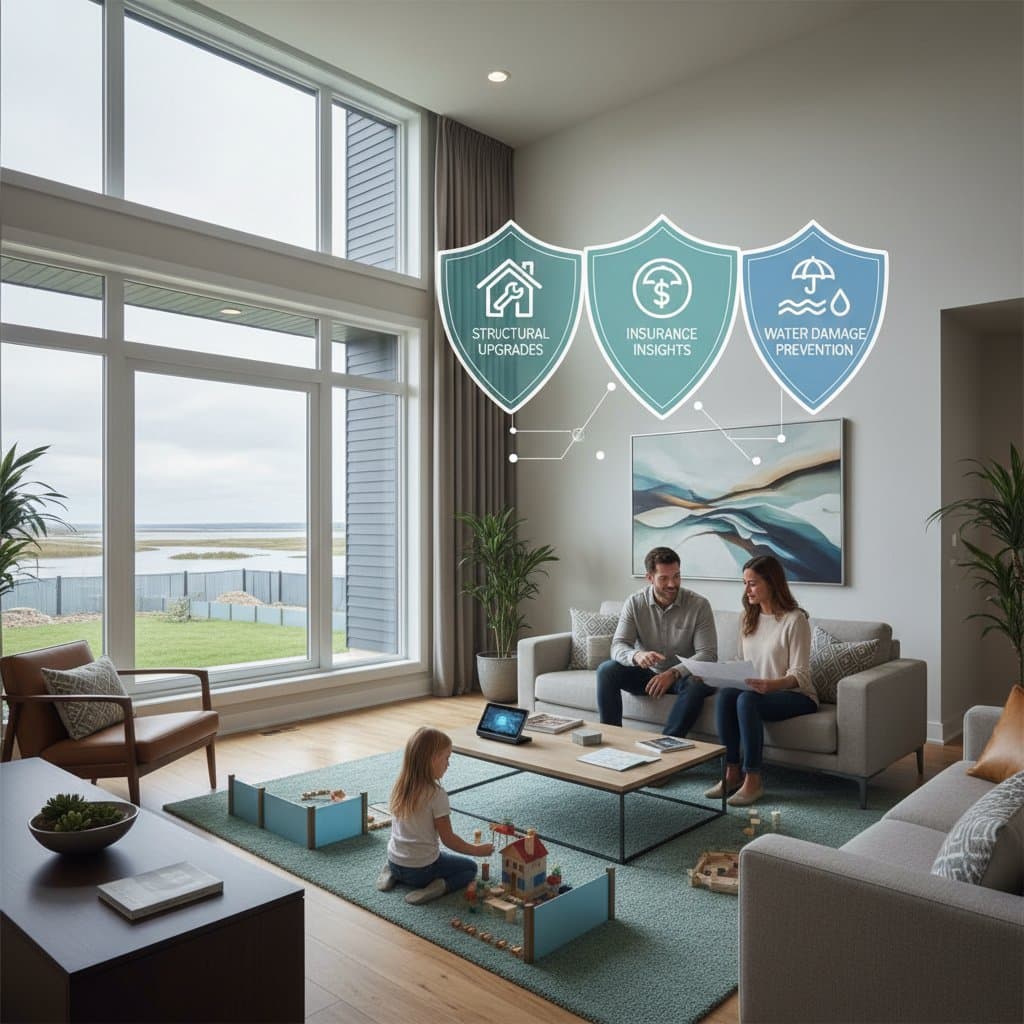Essential Flood-Proof Upgrades for Homeowners
Flooding poses one of the greatest financial risks to residential properties. Homeowners must adopt a systematic strategy that integrates engineering solutions, insurance strategies, and financial planning. These flood-proof upgrades not only shield against water damage but also enhance property value, meet insurance standards, and support long-term financial health.
What Flood-Proofing Entails
Flood-proofing involves structural and mechanical enhancements aimed at reducing flood damage. These measures either block water entry or mitigate harm if water infiltrates the structure. Physical changes, such as installing barriers or improving drainage, pair with administrative actions like reviewing flood insurance policies.
Effective plans build a three-layer defense. The first layer focuses on exterior barriers to repel water. The second strengthens interior elements to contain any intrusion. The third prepares for recovery through financial and operational safeguards.
Breaking Down the Costs
Flood-proofing costs depend on factors like home elevation, soil conditions, and flood zone location. Homeowners benefit from categorizing expenses to create accurate budgets.
- Basic measures, including foundation sealing or sump pump installation, typically range from $200 to $800.
- Structural changes, such as elevating electrical systems or adding flood vents, cost $2,000 to $10,000.
- Major overhauls, like lifting the entire home to exceed base flood elevation, exceed $50,000 in many cases.
Account for ongoing costs beyond initial outlays. Annual maintenance, equipment replacements, and backup power checks add $100 to $500 yearly. Insurance rarely covers these, so integrate them into your financial plan.
Navigating Flood Insurance Options
Flood insurance operates separately from standard homeowners coverage. Many policies omit flood damage, leaving owners vulnerable to unexpected denials. Review policy details to understand coverage scope, deductibles, and restrictions.
| Coverage Level | Monthly Premium | Deductible | Building Coverage Limit | Contents Coverage Limit | Common Exclusions |
|---|---|---|---|---|---|
| Basic | $40 to $80 | $1,000 | Up to $100,000 | Up to $40,000 | Basements, landscaping, temporary structures |
| Standard | $90 to $150 | $1,000 | Up to $250,000 | Up to $100,000 | Outbuildings, vehicles, earth movement |
| Premium | $160 to $220 | $1,000 | Up to $500,000 | Up to $200,000 | Pre-existing damage, neglect, groundwater |
Examine waiting periods, which can delay coverage up to 30 days, and aggregate limits that cap total payouts over time. Policies often exclude issues from poor maintenance or sewer backups not classified as floods.
Implementing Flood-Proof Measures Step by Step
Treat flood-proofing as a planned project with clear phases. This approach ensures compliance and maximizes effectiveness.
- Schedule a professional flood risk assessment. Experts evaluate site grading, foundation integrity, and drainage patterns to pinpoint weaknesses. Expect costs of $300 to $600 for this initial step.
- Review the assessment report for prioritized recommendations and detailed estimates. Include tests for soil stability and elevation surveys to inform decisions.
- Secure necessary permits through local authorities. Submit plans that align with flood-resistant building codes; processing may take 2 to 6 weeks depending on location.
- Hire vetted contractors to execute the work. Installations might cover backflow preventers, raised HVAC units, or fortified walls, with timelines from days to months.
- Conduct post-installation tests and inspections. Submit results to insurers to verify coverage and schedule annual checks to sustain protection.
Common Coverage Gaps and How to Avoid Them
Policies contain exclusions that lead to claim rejections. Stay proactive to prevent these issues.
- Neglected equipment, like unmaintained sump pumps, voids related claims.
- Undisclosed pre-existing issues, such as foundation leaks, result in denials.
- DIY alterations to landscaping or drainage that worsen flooding trigger exclusions.
- Unreported structural modifications fail to update policy terms.
Keep a maintenance journal with dates, photos, and receipts. This documentation proves diligence during claims and supports appeals if needed.
Long-Term Financial Benefits
View flood-proofing as an investment spanning years. Prevention often proves cheaper than recovery, where even minor floods incur $20,000 or more in damages.
Consider these financial aspects when planning:
- Upfront expenses for materials and labor.
- Annual outlays for upkeep, testing, and premium adjustments.
- Future gains from higher resale value and premium discounts up to 20 percent.
Perform a simple break-even calculation: Divide upgrade costs by annual savings in premiums and avoided repairs. Many investments recoup within 5 to 10 years.
Choosing the Right Upgrades
Use a structured framework to select measures. Base choices on site-specific data.
- Check your property's flood zone via FEMA maps or local offices.
- Assess entry points for water, from slabs to plumbing lines.
- Confirm insurer mandates for continued coverage.
- Explore funding through low-interest loans or FEMA grants for high-risk areas.
Retain records of assessments, bids, and completions. These aid insurance reviews and boost buyer confidence during sales.
Safeguarding Against Service Risks
Select reliable professionals to protect your investment. The sector varies in quality, so verify credentials upfront.
- Confirm state licensing, bonding, and liability insurance for contractors.
- Demand detailed, line-item quotes to identify potential overcharges.
- Negotiate payment schedules tied to milestones, never full upfront.
- Scrutinize warranties for duration and defect coverage.
- Document all changes in writing to avoid misunderstandings.
These practices minimize disputes and align work with insurance and code requirements.
Strengthening Home Resilience
A three-layer flood defense fortifies your property against escalating threats. It safeguards structures, secures insurance benefits, and controls costs over time. Homeowners who plan meticulously achieve lasting security and peace of mind.



